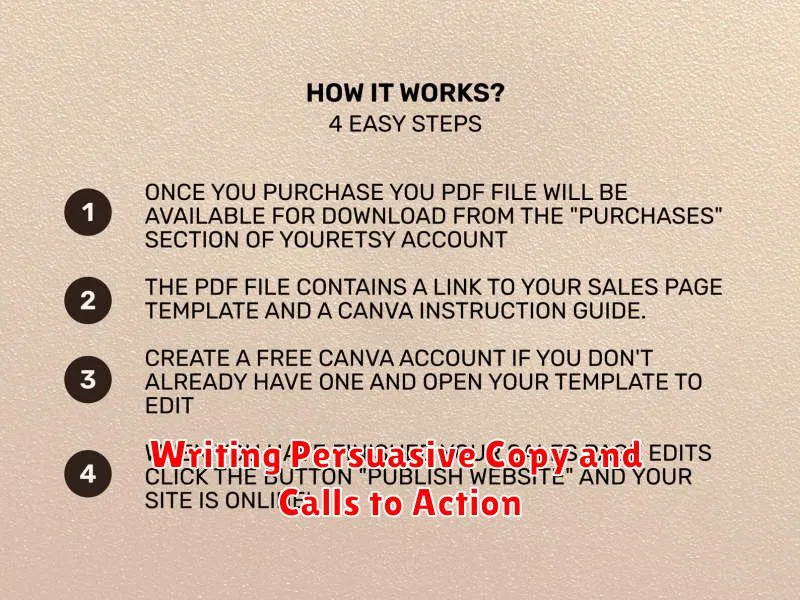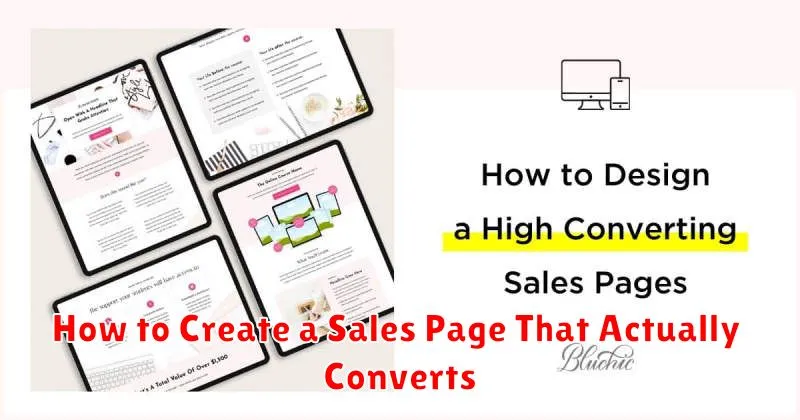Creating a high-converting sales page is crucial for any online business. A sales page is where the magic happens – it’s the platform designed to persuade visitors to take the desired action, whether it’s purchasing your product, signing up for a service, or joining your email list. This article will provide you with a comprehensive guide on how to create a sales page that actually converts, maximizing your return on investment and driving business growth. We’ll explore key elements, including compelling copywriting, effective design principles, and strategic use of psychological triggers, all essential for turning casual browsers into paying customers.
Learn how to craft a high-converting sales page that resonates with your target audience. We’ll delve into the specifics of what makes a sales page truly effective, breaking down complex strategies into actionable steps. From understanding your target audience to crafting a compelling headline and utilizing social proof, we’ll cover everything you need to transform your sales page from a simple landing page into a powerful conversion machine. By implementing the strategies outlined in this article, you can significantly improve your conversion rates and drive more sales.
What Makes a High-Converting Sales Page?
A high-converting sales page effectively persuades visitors to take a desired action, typically making a purchase. Several key elements contribute to this persuasive power.
Clarity is paramount. The page must clearly communicate the product’s value proposition and address the target audience’s pain points. Compelling copy that speaks directly to the customer’s needs and desires is essential.
Building trust is crucial. This can be achieved through testimonials, social proof, and guarantees. A clear and concise call to action is also vital, guiding the visitor towards the desired conversion.
Structuring the Page from Top to Bottom
A high-converting sales page follows a logical flow, guiding the visitor towards the desired action. This structure is crucial for maintaining engagement and minimizing drop-offs.
Start with a compelling headline that grabs attention and clearly communicates the value proposition. Follow this with a brief, persuasive introduction highlighting the key benefits. Then, delve deeper into the problem your product or service solves, emphasizing the pain points your target audience experiences.
Next, introduce your solution and explain how it specifically addresses those pain points. Showcase the features and benefits, focusing on the value they provide. Include social proof, such as testimonials or case studies, to build trust and credibility. Finally, present a clear and compelling call to action, making it easy for the visitor to purchase.
Crafting a Compelling Headline and Subheading
Your headline is the first, and often only, impression you make on a potential customer. It must be compelling enough to grab their attention and make them want to learn more. Focus on highlighting the key benefit your product or service offers.
A strong subheading expands on the headline, providing a more detailed glimpse into the value proposition. It should clarify and reinforce the primary benefit while enticing the reader to continue down the page.
Consider using numbers, questions, or power words to create a sense of urgency and intrigue. Keep it concise and easy to understand, focusing on the transformation your offering provides.
Adding Social Proof and Testimonials
Social proof and testimonials are crucial for building trust and credibility, significantly impacting conversion rates. Showcasing positive experiences from previous customers helps potential buyers overcome hesitation and make a purchase decision.
Include a variety of testimonials, such as:
- Quotes: Short, impactful statements from satisfied customers.
- Case studies: In-depth stories highlighting the benefits of your product or service.
- Video testimonials: Authentic and engaging accounts of customer experiences.
Display testimonials strategically throughout your sales page, particularly near calls to action. Ensure they are genuine and relatable to your target audience. Consider showcasing testimonials from diverse customer segments to further enhance credibility.
Using High-Quality Product Images or Videos
High-quality visuals are crucial for converting visitors into customers. They allow potential buyers to see exactly what they’re getting, building trust and desire.
Use professional-grade photos or videos that showcase your product from multiple angles. Highlight key features and benefits. Ensure images are well-lit, in focus, and accurately represent the product’s color and texture.
For videos, keep them concise and engaging, focusing on the product’s value proposition. Consider using lifestyle shots to demonstrate how the product can be used in everyday situations.
Writing Persuasive Copy and Calls to Action

Compelling copy is the backbone of a high-converting sales page. It should speak directly to your target audience’s needs and desires. Focus on the benefits of your product or service, not just its features. Highlight how it solves a problem or improves their lives.
Equally crucial is a strong call to action (CTA). Your CTA should be clear, concise, and create a sense of urgency. Use action-oriented language that tells the reader exactly what you want them to do. Examples include “Get Started Today,” “Claim Your Discount Now,” or “Learn More.” Make your CTA button visually prominent and easy to find.
Simplifying Checkout or Booking
A streamlined checkout process is crucial for converting potential customers. Remove any unnecessary steps or fields that could deter a purchase. Ask only for essential information.
Offer multiple payment options to cater to different preferences. This might include credit cards, PayPal, or other digital wallets. Clearly display accepted payment methods.
For bookings, allow customers to easily select dates and times. A visual calendar or scheduling tool can significantly improve the user experience. Confirm bookings instantly with a clear confirmation message.
Removing Distractions and Clutter
A clean and focused sales page is crucial for conversions. Eliminate anything that doesn’t directly contribute to the core message and the visitor’s journey towards purchasing. This includes unnecessary images, excessive text, and distracting design elements.
Prioritize clarity and a streamlined layout. Ensure your call to action is prominent and easy to find. Whitespace is your friend; use it strategically to guide the reader’s eye and prevent the page from feeling overwhelming.
Consider using a heatmapping tool to analyze where visitors are clicking and scrolling. This data can reveal distracting elements that need to be removed or repositioned for better flow and focus on your primary conversion goal.
Making It Mobile Friendly
In today’s mobile-first world, ensuring your sales page is easily accessible and functional on any device is critical. A non-responsive design can lead to lost sales and a negative user experience.
Key considerations for mobile optimization include using a responsive design framework, optimizing images for faster loading times, and simplifying the navigation for smaller screens. Ensure buttons are easily tappable and forms are concise.
Test your page thoroughly on various devices and screen sizes to identify and fix any display or functionality issues. This will ensure a consistent and positive user experience for all potential customers, regardless of how they access your sales page.
Tracking Conversions and Making Improvements

Tracking your sales page’s performance is crucial for ongoing optimization. Conversion rate, the percentage of visitors who complete a desired action (e.g., purchase, sign-up), is the key metric.
Use analytics tools to monitor your conversion rate. Identify areas for improvement by analyzing user behavior. Which parts of the page have high bounce rates? Where do users abandon the process? This data informs your optimization strategy.
A/B testing is a powerful method to refine your page. Test different headlines, calls to action, or even page layouts. By comparing the conversion rates of different versions, you can identify the most effective elements.

